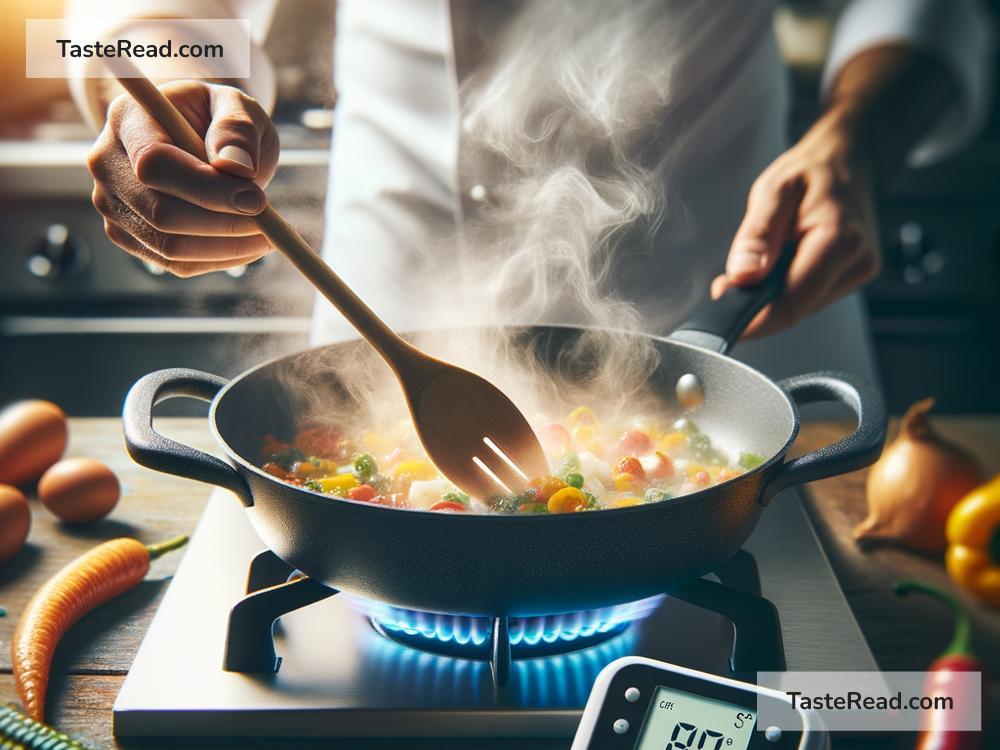The Science of Cooking with Thermodynamics: Techniques and Tips
Cooking is an everyday activity that lets us create delicious meals. But did you know that when you cook, you are also working with science? The science behind cooking involves a concept called thermodynamics, which is all about how heat energy moves and changes. By understanding the basics of thermodynamics, you can improve your skills in the kitchen and cook more efficiently. Don’t worry—this blog will break down the topic in simple English so it’s easy to follow!
What Is Thermodynamics?
Thermodynamics is a branch of science that studies how heat and energy move from one thing to another and how it causes changes. In cooking, thermodynamics explains how heat travels through food, changes its temperature, and transforms its structure. For example, raw meat turns into a flavorful steak when heat causes chemical reactions in the proteins and fats. Similarly, bread dough rises and turns golden brown due to the heat interacting with sugars, yeast, and flour.
Understanding thermodynamics can help you control the cooking process better, leading to tastier results.
Key Concepts of Thermodynamics in Cooking
1. Heat Transfer
Heat transfer is a major part of cooking because food gets its energy from heat. There are three main types of heat transfer:
-
Conduction: Heat moves directly from one object to another. Think about when you heat a pot on the stove, and the pot becomes hot enough to cook the ingredients inside. Frying an egg in a skillet is also an example of conduction.
-
Convection: This happens when heat moves through liquids or gases. For example, when you boil water, the heat spreads as the water circulates. Likewise, ovens use hot air to cook food evenly.
-
Radiation: Heat travels through waves, like when you grill a burger or toast bread under a broiler. The heat energy from the flames or heating element cooks the food.
By knowing which type of heat transfer is being used, you can choose the right tools and methods for specific recipes.
2. Temperature Control
In thermodynamics, temperature plays a big role. Cooking at the correct temperature ensures that food is cooked properly and safely. For example:
- Slow cooking at low temperatures helps tenderize tough meats because heat gradually breaks down the connective tissues.
- High temperatures are great for searing steaks, creating caramelized crusts, or frying crispy snacks like french fries.
- Keeping water at a steady temperature, such as for cooking pasta or poaching eggs, prevents overcooking or uneven results.
Using kitchen appliances like thermometers and timers can help you maintain the right temperature and improve your dishes.
3. Phase Changes
Cooking often involves phase changes, where food moves from one state to another because of heat. Here are a few examples:
- Liquid to Gas: Boiling water turns into steam when heated. Steam can help cook vegetables quickly and evenly.
- Solid to Liquid: Chocolate or butter melts when heated, making it easier to mix into recipes or drizzle over desserts.
- Solid to Gas: When you toast bread, heat transforms the starches and proteins in the bread, releasing aromas and creating the crispy texture we love.
Knowing how phase changes work can help you understand what happens in recipes and avoid mistakes such as burning or undercooking.
Thermodynamics Techniques & Tips for Better Cooking
Now that you know the basics, here are some practical techniques and tips that use thermodynamics to make your cooking even better:
1. Use Heat Zones for Grill Cooking
When grilling, create heat zones on the grill by pushing the charcoal to one side (or adjusting burners on a gas grill). The hotter zone is perfect for searing meats, while the cooler zone lets you finish cooking slower without burning. This technique uses conduction and radiation effectively.
2. Preheat Your Appliances
Always preheat your oven, pan, or grill before cooking. Preheating ensures that the food gets exposed to consistent heat from the beginning, preventing uneven cooking.
3. Rest Meat After Cooking
After cooking meat, let it rest for a few minutes before cutting. This allows the juices to redistribute, making the meat juicier and more flavorful. Thermodynamics explains this as residual heat spreading inside the meat.
4. Use a Lid for Faster Cooking
When you cover a pot or pan, you trap the heat inside, speeding up the cooking process by using convection. This is especially useful for boiling, steaming, or simmering.
5. Experiment with Sous Vide Cooking
Sous vide is a method where food is vacuum-sealed and cooked in a water bath at a precise temperature. This technique offers incredible control over how heat transfers, giving you perfectly cooked meals every time.
6. Avoid Overcrowding the Pan
When too much food is crammed into a pan, heat is not evenly distributed, leading to uneven cooking. Allow space, so each piece gets the right exposure to heat from conduction or convection.
Final Thoughts
Cooking is a form of art, but it’s also deeply connected to science—especially thermodynamics. By understanding how heat transfers, why temperature matters, and what phase changes happen in food, you can become a smarter, more skilled chef. Whether you’re grilling, baking, boiling, or frying, the principles of thermodynamics are always in action, helping you create meals that look, taste, and smell amazing.
So, the next time you’re in the kitchen, take a moment to appreciate the science behind your cooking. With these tips and techniques, you’ll not only enjoy the process but also impress anyone lucky enough to share your food!


